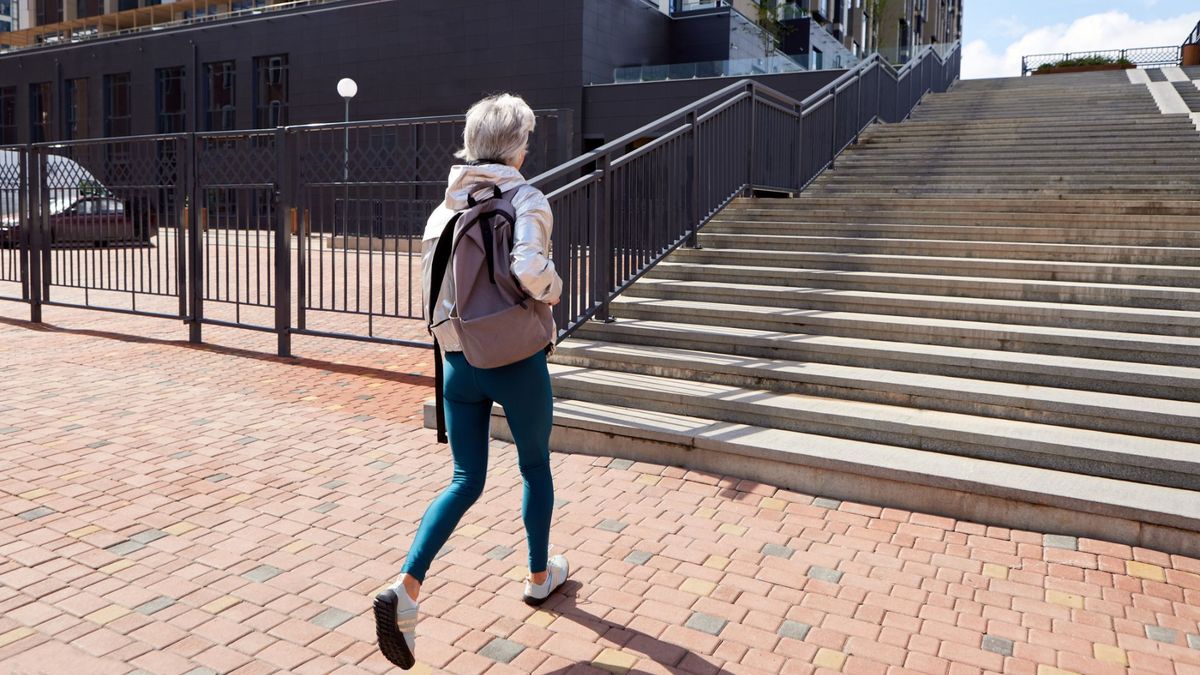If you have lower back pain, you’re likely all too familiar with the ‘exercise as medicine’ approach many doctors take. From expensive Pilates classes and physiotherapy appointments to home workouts, you’ve probably tried them all. But new research suggests that one of the most simple, accessible, and free exercises could be the way forward.
A new study has found that adults with a history of lower back pain went nearly twice as long with a recurrence of the problem if they regularly went for a walk, suggesting that simply walking could be one of the most effective ways to deal with lower back pain without painkillers, structured workouts, physio appointments – or spending any money at all. The benefits of an early morning walk go on and on…
This could be life-changing for women around the world, as lower back pain can be a debilitating condition. Just recently, a study by the Trades Union Congress (TUC) found that 1.54 million women were off work sick last year – an increase of 48% over the last five years. Musculoskeletal issues (such as back pain) were one of the key contributors to the rise, along with poor mental health.
The study by Macquarie University also appears to solve another key issue with lower back pain: recurrence. Seven in 10 people see a return of lower back pain issues a year after treatment. The researchers followed 701 adults with lower back pain for one to three years after randomly allocating them to a walking programme, a monthly physio appointment, or a control group. Each programme lasted for six months.
Those who took on the walking intervention stepped out walking for 30 minutes a day, five days a week for a “manageable” stroll, and were found to have made the most progress. They went almost twice as long as others in the study without a recurrence of lower back pain.
Importantly, the participants were encouraged to continue walking as a workout after the programme finished. The intervention was also combined with education from physiotherapists to help participants better understand pain, fear exercise less when it came to pain management, and have more confidence after minor recurrences of lower back pain.
(Image credit: Getty Images)
Mark Hancock, the senior author of the paper and a professor of physiotherapy at Macquarie University, says that walking could have a “profound” impact on how lower back pain is managed.
“Walking is a low-cost, widely accessible and simple exercise that almost anyone can engage in, regardless of geographic location, age or socio-economic status,” he says.
“We don’t know exactly why walking is so good for preventing back pain, but it is likely to include the combination of the gentle oscillatory movements, loading and strengthening the spinal structures and muscles, relaxation and stress relief, and release of ‘feel-good’ endorphins.”
He also highlights the other benefits of walking for cardiovascular health, bone density, weight management, and mental health.
Tips for walking with lower back pain
- Start slow: The study results suggest that walking for lower back pain is all about keeping your workout “manageable”. This means you should start slow and go at your own pace – it’s not the time for power walking.
- Alternate walking days: If you’re new to walking, alternate your walking days with rest days. For example, you might walk on a Monday, Wednesday, and Friday, and take Tuesday, Wednesday, and the weekends as a break. This will help ease you into the routine.
- Maintain good posture: Good walking posture means standing tall with a neutral pelvis, relaxed shoulders, head up, and eyes forward. Try to avoid looking at the ground too much.
- Don’t worry about distance: Several studies have highlighted the benefits of walking for lower back pain in the last 10 years – and they all suggest that low-intensity, shorter sessions are the way forward. Don’t worry about speed or distance on your walk – just focus on your posture and maintaining a good stride.
- Wear the right shoes: Comfort is key to maintaining a workout habit. You can technically walk in anything – but having a good pair of walking shoes and workout leggings can make things more comfortable.
Before taking on any new workout, consult your doctor or a certified physiotherapist to make sure that walking can help improve your experience of lower back pain – rather than make it worse.

